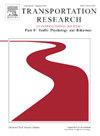从科幻到现实:通过扩展的期望-确认模型探索用户对自动驾驶汽车服务的满意度和忠诚度
IF 3.5
2区 工程技术
Q1 PSYCHOLOGY, APPLIED
Transportation Research Part F-Traffic Psychology and Behaviour
Pub Date : 2025-05-19
DOI:10.1016/j.trf.2025.05.003
引用次数: 0
摘要
中国最近允许自动驾驶汽车(AV)公司向公众提供完全无人驾驶的叫车服务,这标志着汽车在完全无人干预的情况下运行的一个重要里程碑。随着这些服务在主要城市的不断扩展,了解在采用后阶段影响用户满意度的因素以及自动驾驶服务提供商的结果变得越来越重要。为此,本研究提出了一个扩展的期望-确认模型(ECM),该模型整合了技术接受与使用统一理论(UTAUT2)、冷静理论、感知安全、满意度、品牌爱和忠诚度的关键结构。采用有目的抽样的方法,对中国489名AV实际用户进行数据采集,采用偏最小二乘结构方程模型(PLS-SEM)和模糊集定性比较分析(fsQCA)进行分析。结果表明,期望确认、绩效期望、努力期望、便利条件、享乐动机、价格价值、感知安全、吸引力、亚文化吸引力和独创性显著影响用户满意度,其中绩效期望、亚文化吸引力和感知安全是影响用户满意度的主要因素。此外,满意度推动品牌喜爱,进而促进品牌忠诚度。所提出的模型占用户满意度方差的72.1%,而fsQCA确定了导致高满意度和低满意度的四种不同配置。本研究将关注焦点从收养意向转移到收养后体验,整合了理性和情感两方面的满意度驱动因素,为AV研究做出了贡献。从实际的角度来看,研究结果为AV服务提供商提供了可操作的见解,这些服务提供商寻求设计以用户为中心的体验,不仅满足功能期望,还建立了推动长期忠诚度的情感纽带。本文章由计算机程序翻译,如有差异,请以英文原文为准。
From sci-fi to reality: exploring user satisfaction and loyalty toward autonomous vehicle services through an extended expectation-confirmation model
China has recently permitted autonomous vehicle (AV) companies to offer fully driverless ride-hailing services to the public, marking a significant milestone toward vehicles operating entirely without human intervention. As these services continue to expand across major cities, it becomes increasingly important to understand the factors that influence user satisfaction during the post-adoption stage, as well as the outcomes for AV service providers. To this end, this study proposes an extended expectation-confirmation model (ECM) that integrates key constructs from the unified theory of acceptance and use of technology (UTAUT2), coolness theory, perceived security, satisfaction, brand love, and loyalty. Data were collected from 489 actual AV users in China through purposive sampling and analyzed using partial least squares structural equation modeling (PLS-SEM) and fuzzy set qualitative comparative analysis (fsQCA). The results show that expectation confirmation, performance expectancy, effort expectancy, facilitating conditions, hedonic motivation, price value, perceived security, attractiveness, subcultural appeal, and originality significantly influence user satisfaction—with performance expectancy, subcultural appeal, and perceived security emerging as the most influential factors. Furthermore, satisfaction drives brand love, which in turn fosters brand loyalty. The proposed model accounts for 72.1 % of the variance in user satisfaction, while fsQCA identifies four distinct configurations leading to high and low satisfaction. This study contributes to AV research by shifting the focus from adoption intentions to post-adoption experiences, integrating both rational and emotional drivers of satisfaction. From a practical perspective, the findings offer actionable insights for AV service providers seeking to design user-centered experiences that not only meet functional expectations but also build emotional bonds that drive long-term loyalty.
求助全文
通过发布文献求助,成功后即可免费获取论文全文。
去求助
来源期刊
CiteScore
7.60
自引率
14.60%
发文量
239
审稿时长
71 days
期刊介绍:
Transportation Research Part F: Traffic Psychology and Behaviour focuses on the behavioural and psychological aspects of traffic and transport. The aim of the journal is to enhance theory development, improve the quality of empirical studies and to stimulate the application of research findings in practice. TRF provides a focus and a means of communication for the considerable amount of research activities that are now being carried out in this field. The journal provides a forum for transportation researchers, psychologists, ergonomists, engineers and policy-makers with an interest in traffic and transport psychology.

 求助内容:
求助内容: 应助结果提醒方式:
应助结果提醒方式:


